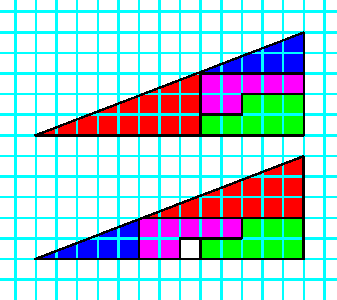According to a new study by scientists from University College London, it seems people who find optical illusion solving easier are less inclined to think about the process and understand how they came to that decision.
This conclusion came after further analysis of data from a research conducted last year, which showed people with more grey matter in the primary visual cortex were better at solving visual illusions. The team then looked for size differences elsewhere in the brain that correlate with variation in the visual cortex.
To get there in the first place, they analyzed the cortex of 30 participants with a RMI scanner while they were showed images through a computer. Soon, researchers had a structural image of the brain, in which they were surprised to find a relationship between the primary visual cortex and a region at the front of the brain called the anterior prefrontal cortex.
“When people have a bigger anterior prefrontal cortex, they have a smaller visual cortex, and vice versa,” lead study author, Chen Song, says.

Interestingly enough, previous research has shown that the size of the aPFC is linked to introspection – the more gray matter an individual has in his aPFC, the more he is likely be able to assess whether or not he made the right decision. Correlating, the study suggests that individuals with a greater introspection capability have a harder time spotting illusions. The team now plans on carrying out behavioral studies to find out if this is truly the case.
Why is this important?
“Animal studies have shown that some genes involved in brain development are expressed at differing levels along the anterior-posterior axis of the brain,” says Song.
Those differences might be most stark when comparing structures at opposite ends of the cortex – such as the aPFC and primary visual cortex.
Bigger is not better, brain-wise
Elliot Freeman at City University in London agrees that the results are a surprise. “But bigger is not necessarily better in terms of brain power,” he says. Despite evidence that a large aPFC might be linked to better introspection, a small aPFC might be beneficial too, Freeman says. “It might be better to have fewer synaptic connections for more focused and coherent decision making.”
However, more neurons in the visual cortex might boost resolution in visual processing, Freeman adds. “A brain with more visual volume and less frontal volume might actually work better.”
The study was published in the Journal of Neuroscience.


